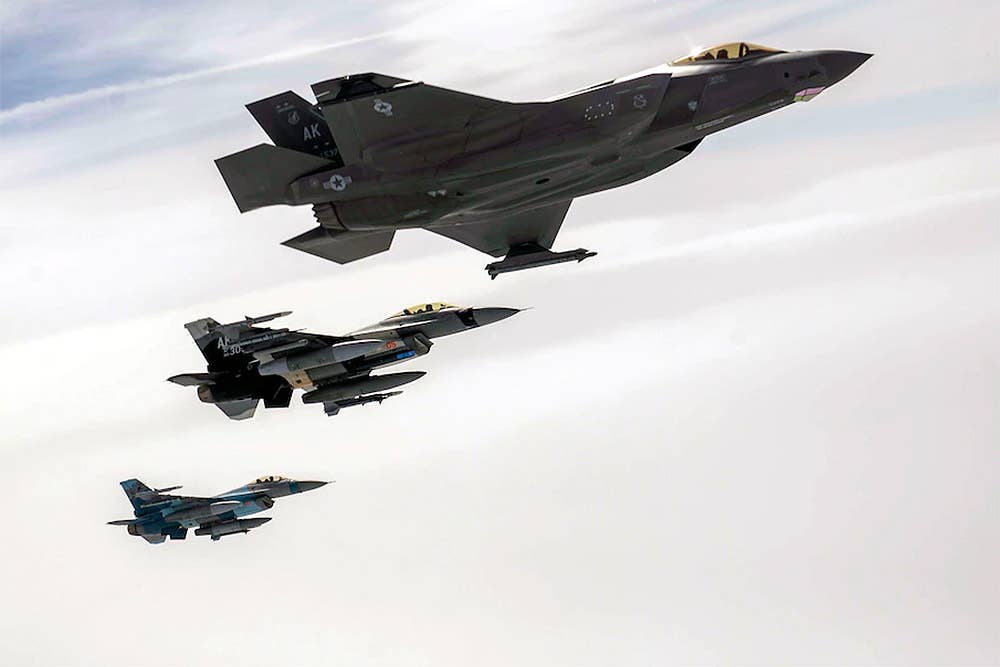
An F-35A Lightning II and two F-16 Fighting Falcons, assigned to Eielson Air Force Base, Alaska, fly above the Joint Pacific Alaska Range Complex. U.S. Air Force
Future U.S. Air Force combat readiness will rely on a streamlined fleet of four fighter aircraft platforms, a top USAF commander said Wednesday.
The retooling of the USAF aircraft fleet comes as the service looks to reposition for potential conflict with China, which it says is actively seeking to exploit limitations created by European basing and decades focused on the Middle East.
“For decades, the United States military organized, trained and equipped to fight a peer adversary: the Soviet Union,” USAF Air Combat Commander Gen. Mark Kelly said Wednesday at the Air Force Association’s Air Space Cyber Conference. “The requirements of every single fighter designed and built for the United States, from the F-86 to the F-35, were designed against this peer adversary to maintain a technical advantage to operate from European basing,” Kelly said.
“We now must truly pivot a force that has spent 30 years in the Middle East to face a new challenge,” he said.
By 2030, the USAF will focus its fighter fleet from its current seven platforms to “4 + 1″:
- The F-35
- The F-15EX
- The F-16
- Next Generation Air Dominance (NGAD) platform, considered to be vital portion of the future fleet force, which is under development, plus
- The A-10
“We must keep the F-22 dominant for air superiority in a highly contested environment, and facilitate a hot handover to our next generation air dominance capability,” Kelly said. “The F-35 will be the cornerstone of our contested environment force, and the F-15EX will provide the big range, big weapons and disruptive avionics and sensors to complement the F-35 in the contested environment,” he said.
The streamlining of fighter platforms is a continuation of a dramatic evolution in fleet size in recent decades. Since the height of the Cold War, the USAF’s fighter fleet has decreased by 47 percent, Kelly said.
In 1961, for example, the USAF had a fighter fleet of 3,938 aircraft spread across 108 combat squadrons, with an average aircraft age of 4.5 years. By 2003, the USAF fighter fleet inventory had dipped to 2,526 aircraft, averaging 18 years across 85 combat squadrons.
This year, the USAF fleet includes 2,094 aircraft, averaging 28.6 years across 54 combat squadrons, Kelly said.
China is watching the numbers.
“They know that our fighting force has gotten much older, and they know that our fighting force has gotten significantly smaller,” Kelly said.
In the 20 years the U.S. military spent in Afghanistan, China has organized, trained, and equipped its military, and it is “singularly focused and singularly invested in fighting us,” he said.

Sign-up for newsletters & special offers!
Get the latest FLYING stories & special offers delivered directly to your inbox






